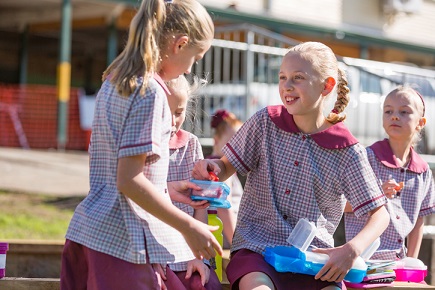
For many parents choosing a school for their child can be one of the most difficult decisions they’ll face.
Author Kasey Edwards’ recent opinion piece identified some of the gender biases often at play in co-ed classrooms including more attention given to boys and more constructive praise and criticism for boys. But she has not helped by positing a number of misleading assumptions about single-sex schools.
Edwards cherry-picked a single UK study that compared students’ academic results in single-gender and mixed-gender classes in a co-ed school. The study, which ran for one year, excluded high-ability students and included students with special educational needs. While the researchers found no academic advantage for either class type Edwards extrapolated their classroom findings to wrongly claim single-sex schools have no advantages.
To set the record straight there is a growing body of research supporting the case for single-sex schools. Much larger and arguably better designed studies have looked at academic results (1, 2, 3, 4) and adjusted for variation in intake policies (such as academic selection) and socioeconomic status, and found that students in single-sex learning environments performed better than their co-ed counterparts.
A 2017 report by the Australian Council of Educational Research analysed the numeracy and literacy (NAPLAN) data for students in Years 3, 5 and 7 at single-sex and co-educational schools. It found that boys and girls at single-sex schools achieved higher scores than co-ed students even when socio-economic status was taken into account. Girls at single-sex schools were 4.2 terms ahead of co-ed students in reading and 2.8 terms ahead in maths. Boys at single-sex schools were, on average, 1.6 terms ahead of co-ed students in reading and 3.9 terms ahead in maths.
But a good education is not solely about academic performance, it’s also about nurturing the development and growth of confident, resilient and inquisitive global citizens.
There are studies that show unequivocally that students in single-sex schools benefit from a learning environment free from gender stereotyping, unconscious bias and social pressure (5,6,7). For girls it is the social and emotional support, confidence and approach to challenges, risks and leadership opportunities that girls’ schools provide. Simply put, every aspect of a girls’ school is tailored to girls and how they learn, without competition and social pressure from boys, and this is enormously empowering for girls in their teenage years.
Without boys around girls are more likely to participate in sport and physical activity (8); to pursue STEM subjects like science and maths (9), and feel confident about their abilities in these subjects (10, 11). Girls will also hold every leadership position in girls’ schools from the swim team, coding club and music groups to school captain.
As for learning how to socialise with the opposite sex, there are ample opportunities for students at single-sex schools to socialise, interact, negotiate, discuss and compete with the opposite sex both during and after school. But for girls there are big advantages to an all-girls environment where they can comprehend their value and capabilities in ways that have nothing to do with how they look or society’s expectations for them. They are free to experiment and explore, they can follow their ambitions without wasting a second thought on how male counterparts might perceive them.
As the girls attending the 2018 Alliance of Girls’ Schools Australasia leadership conference said, ‘You're able to be more open … everyone has an equal chance to speak up and be heard’, and on boys, ‘there are plenty of opportunities to socialise with boys outside of school but at school my focus is on learning’.
The bottom line is that the ‘real-world’ of co-education is not always a gender equal environment free from gender stereotypes, unconscious bias and social pressures.


